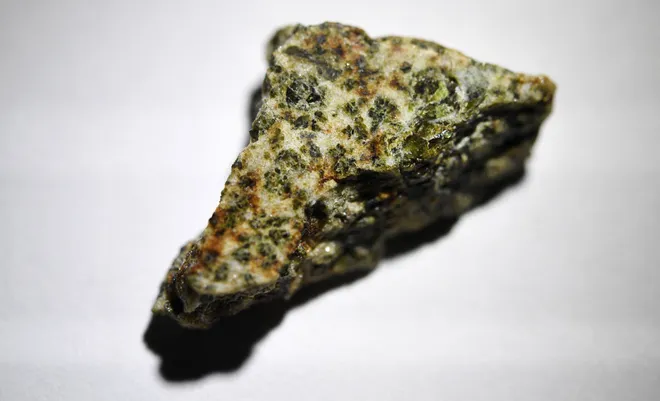This meteorite is 4.6 billion years old. Here's what it could reveal about Earth's creation
Researchers believe an ancient space rock uncovered three years ago can shed more light on our understanding of the dawn of our solar system.
Named for the region of the Sahara Desert in Algeria where it was discovered in 2020, Erg Chech 002 was found to contain higher levels than expected of a radioactive isotope known as aluminum-26. The finding is significant because researchers believe the data could reveal more about the birth of the planets and also help scientists better determine the ages of the oldest meteorites that fall to Earth.
The team of scientists who wrote the paper published Aug. 29 in Nature Communications also believe Erg Chech 002 to be a meteorite formed in the first million years of our solar system, making it the oldest known meteor of volcanic origin.
“This is one of the most precise ages ever calculated for an object from space — and our results also cast doubt on some common assumptions about the early solar system,” Australian National University scientist Evgenii Krestianinov, who led the study, wrote in an article he penned for The Conversation, a media outlet with articles written by academics and researchers.
'At the threshold:'How UFOs became mainstream in America
What is Erg Chech 002?
Encrusted with green crystals, Erg Chech 002 is a type of stony meteorite called an achondrite rock that has features similar to volcanic rock and is among the oldest known to date.
In the paper, researchers wrote that analysis revealed that when Erg Chech 002 formed, it contained the radioactive isotope aluminum-26, an unstable form of aluminum believed to have played an important role in a later stage of Earth's evolution.

Aluminium-26, believed by researchers to be the main source of heat in the early solar system, eventually decayed and influenced the melting of the small, primitive rocks that later clumped together to form the planets, Krestianinov said.
The discovery of the unstable element in Erg Chech 002, according to Krestianinov , challenges the idea that aluminium-26 was distributed evenly throughout the early solar system.
"We found that the parent body of Erg Chech 002 must have formed from material containing three or four times as much aluminium-26 as the source of the angrites’ parent body," Krestianinov wrote on the Conversation. "This shows aluminium-26 was indeed distributed quite unevenly throughout the cloud of dust and gas which formed the solar system."
Luna-25:NASA said its orbiter likely found the crash site of Russia's failed Luna-25 moon mission
How did researchers determine the meteorite's age?
Krestianinov and his colleagues analyzed lead and uranium isotopes in Erg Chech 002 and determined its lead-isotopic age as about 4.566 billion years old, around the time that scientists say our solar system formed from a vast cloud of gas and dust.
The team then compared the finding with existing data for not only Erg Chech 002, but other very old meteorites. Because the space rock began its journey nearly 4.6 billion years ago, it's an ideal object for researchers to study and draw conclusions as to the origins of the planets.
It's long been believed that aluminum-26, a major heat source for early planetary melting, was evenly distributed throughout the solar system. But if that's not the case, the conclusion throws into question the ages of meteorites that have fallen to Earth.
The researchers' findings in fact suggests that the ages for the meteorites that have already been found and studied may need to be re-calculated to be more accurate.
"Our results contribute to a better understanding of the solar system’s earliest developmental stages, and the geological history of burgeoning planets," Krestianinov concludes on the Conversation. "Further studies of diverse achondrite groups will undoubtedly continue to refine our understanding and enhance our ability to reconstruct the early history of our solar system."
Eric Lagatta covers breaking and trending news for USA TODAY. Reach him at elagatta@gannett.com.
Disclaimer: The copyright of this article belongs to the original author. Reposting this article is solely for the purpose of information dissemination and does not constitute any investment advice. If there is any infringement, please contact us immediately. We will make corrections or deletions as necessary. Thank you.




